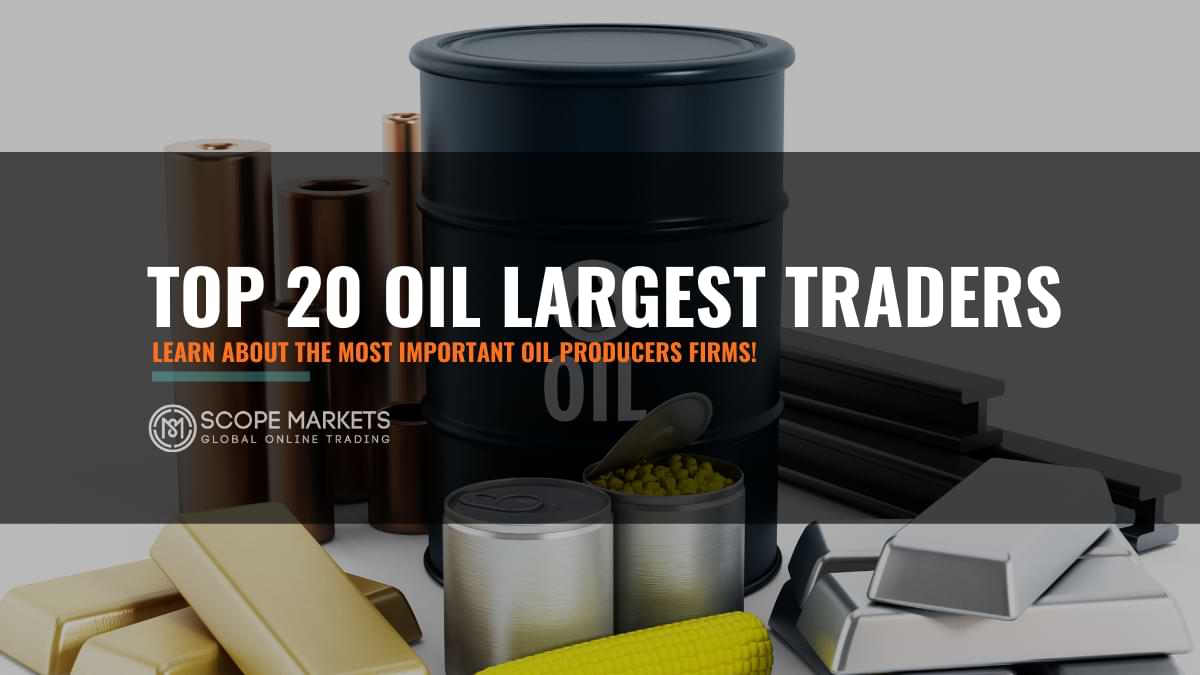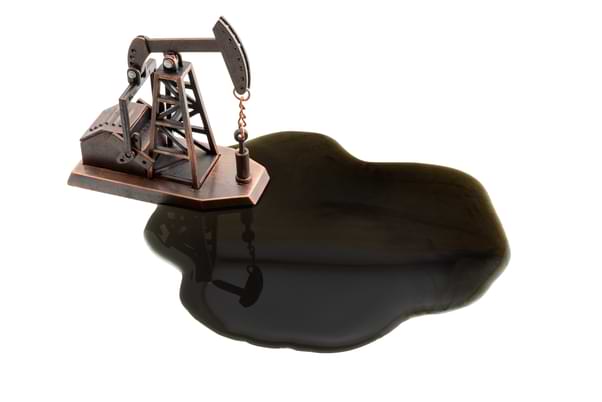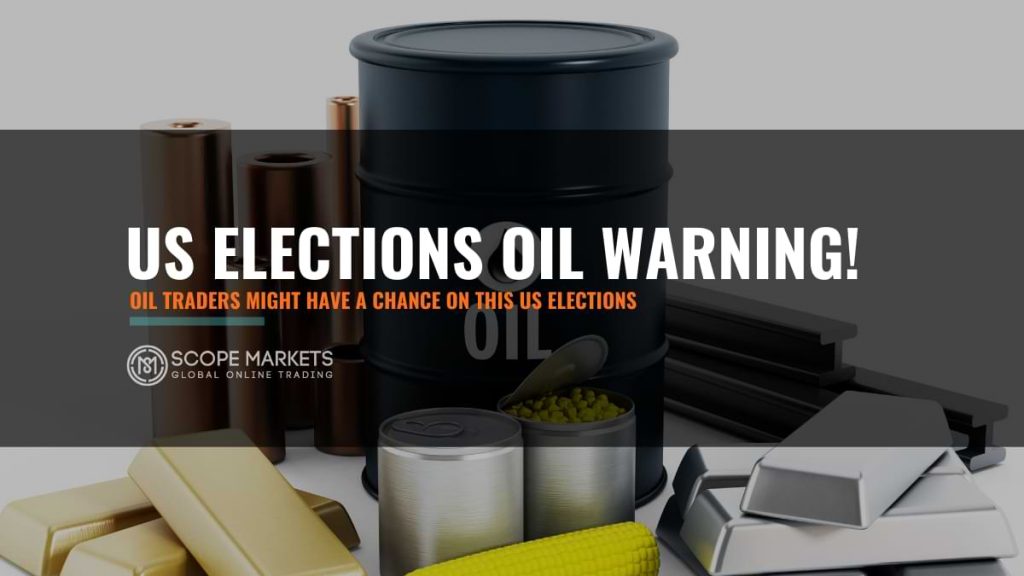Top 20 World’s Largest Oil Traders

Table of Content
Oil produces income for nations with enough oil reserves to have over their internal use. For those economies that are much reliant on imports, oil expenses must be detached into state budgets. Not particularly, occurrences like unrest in oil-manufacturing areas, the latest oil field data, and removal technology improvements impact the oil industry.
Here, you will know more significant things about the oil industry and the top largest oil traders of 2020.
Largest Oil Traders According to Different Countries

1. The United States has Oil Production of 19.51 Million Barrels/Day
The US has been the key oil-manufacturing nation in the world since 2017. Here, oil is generally manufactured in thirty-two states. Also, in US tidal waters – the preponderance of which is then drilled in Texas (41%). The place is also the largest buyer of oil, using a whole of 7.47 billion barrels of oil in the year 2019.
One of the key reasons why the United States is one of the largest oil traders and oil producers is that it was the primary country to use new drilling techniques. Rigs may now dig crossways, allowing access to the oil-producing rock. During 2018 and 2019, oil production in the United States will be enhanced by only more than 9%.
2. Saudi Arabia Involves an Oil Production of 11.81 Million Barrels/Day
Previous to the US turning out the world’s biggest oil traders, Saudi Arabia has the top place for a few years. Saudi Arabia has 6th place as the biggest commodity user. And employing around 3.78 million barrels/day.
After reductions in OPEC, SA’s oil output lessened by 609,000 barrels/day during 2018-19. It was then cut by a more 3.30 million barrels/day in 2020 – after reduced demand because of Covid-19. These production cuts are reasons for interest on the domestic front. And SA’s oil production is held for almost 42% of the nation’s whole GDP.
3. Russia is an oil trader Country with 11.49 Million BPD Oil Production
Russia was one of the first oil producers in the world previous to it passed by Saudi Arabia, and following the US. On the whole, the production increase between 2018 and 2019 was below 1%. Because OPEC and big oil producers of Russia admitted to reducing production because of reduced oil prices. Then, in the first phase of 2020, CoronaVirus restricted production via 20%.
From June 2020, Russia is the 5th biggest user of oil, which estimates for a total of 4% of the world’s use.
4. Another Big Oil Trader is Canada. Produces Approximately 5.50 Million BPD of Oil
Canada is at a slow pace ascending top oil producers, up from number 5 to 4. Production is usually started to improve by over 120% by 2050. Thus, exceeding the maturity rate of all countries that are not in OPEC oil traders countries. Though the radical growth in production can be high. Because most of Canada’s oil is generally produced from oil sands, Canada can use technology to reduce costs.
Canada’s oil usage is almost more than 2.4 million barrels/day. Also, it has abundant oil to continue more than 180 years at the present consumption rate.
5. China Possesses an Oil Production of 4.89 Million Barrels Each Day
China is the 5th biggest oil trader all over the world. But it has a second position as the biggest consumer. And it uses approximately fourteen million barrels/day. This is why the market responded in an intense way to the fall in oil demand from China due to Covid-19.
China’s most of the domestic oil is generally derived from the north-east and central areas. The oil production in China has reduced at a prolonged rate. Also, at present manufacturing and consumption points, it has 5 years’ worth of fixed resources.
6. Iraq Represents One of the Most Important Oil Traders with 4.74 Million BPD
During 2018 and 2019, the oil production of Iraq improved by 2.6%. So, involving oil production up to 4.74 million barrels each day. Iraq has oil production of almost 9% of the oil sources of the world.
Whereas it is the only number 6 on the list of leading oil producers or traders, it is the 2nd biggest in OPEC countries. It’s also the 2nd-largest commodity exporter in the world. Iraq’s trade out of crude oil has improved from 2 to 4 million barrels each day since 2010. As most of the oil from Iraq is generally supplied to India, China, and Europe.
7. UAE’s Oil Trading Involves Production of 4.01 Million BPD
The 3rd OPEC nation on the top oil traders’ list is the UAE. The last time the UAE produced over 4 million BPD was in 2016, after which it reduced by 3.1%.
At 98 billion barrels, the oil reserves of UAE have kept constant since 1988. This signifies the UAE has enough supplies to serve about 300 yrs at the present production and usage rate.
8. Brazil Has 3.67 Million BPD as an Oil Trader
Brazil has seen significant growth in oil manufacturing from 2018 to 2019 and again in 2020. In Dec. 2019, it was having oil production of 3.10 million barrels/day. That is up near 0.52% from Nov. 2019 and near 15.44% from the last year.
Like many oil-producing countries, oil exports of Brazil have reduced in current months. And that is because of less global demand. Brazil holds below 1% of the world’s oil reserves – enough to stay approx. 15 years.
9. Iran Has 3.19 Million BPD of the Oil Trading Market
In the 1970s, Iran had good command over the oil industry, manufacturing between 5 and 6 million BPD. Since many countries initiated to manufacture and transport oil, this number reduced very much. A further drop in production ensued as the US forced and toughened penalties on Iran.
Varying financial situations have made Iran drop its oil earning hope from 29% of Gross Domestic Product in 2019 to 9% for 2020. But, it stays bound to its stake in oil, with the target of adding $500 billion into the oil trader sector via 2025.
10. Kuwait- A Country with 2.94 Million BPD Oil Production
Kuwait’s production of oil and gas is liable for over half of its GDP and over 90% of its earnings via exports. Kuwait had plans to improve its levels of production to 4 million BPD in 2020. But growth has then decreased because of the Covid. As Kuwait is so reliant on oil production to keep up its financial status, it may have to find other trade to grow its income.
Kuwait’s oil consumption at the end of 2019 was 339,000 barrels each day, reduced by 33% in 2018.
Largest Oil Traders According to Oil and Gas Organizations
1. Sinopec- A China PCC
China PCC (Petroleum & Chemical Corporation) is also called Sinopec Group. China is generally known as one of the largest oil traders, amongst other ones. It has attained a 22.09% YoY growth to get RMB2.8tn of working revenue in 2018. Its refinery and allocation section is then approximated around 60% of the returns. Its whole oil refinery output in the year improved by 2.31% to 244 million tonnes. The whole national exchange volume of refined oil stocks trader enhanced by 1.4% to 180.24 million tonnes.
This company’s different business areas involve oil trading and gas investigation and generation, handling of petroleum, purchasing of chemical, refining of chemical, and marketing of refined products, growth and design, and global business.
2. Royal Dutch Shell – An Oil Trader Company and Gas Manufacturing
The oil trader and gas organization Royal Dutch Shell’s working profit was up by 27.26% to $388.37 billion in 2018. Its downstream business listed a YoY growth of 26.42% to touch $334.68bn. As well as valued the whole profit of 86.17%.
The organization’s incorporated gas market, which involves LNG or liquid natural gas promotion and trading. Also, the gas-to-liquids plans increased by 25.34% to $43.764 billion. As well as value for 11.27% of the whole working funds.
Its upstream income improved by 1.99% to $9.89 billion. Due to the much-realized oil trader and gas trading prices throughout the year, despite the 2% drop in its upstream stock.
3. China National Petroleum Corporation or CNPC (Biggest Oil Traders)
State-held China National Petroleum Corp. (CNPC) reported a 25% YoY add-ons to get $346 billion working profit in 2027. And, out of which CNPC’s indexed unit PetroChina added $298 billion.
CNPC is one of the largest oil traders and gas manufacturers in China. PetroChina added 1.1 billion barrels of gas and oil counterparts in the initial 3 quarters of 2018. That was a 2.2% gain evaluated to a similar period in 2017. The firm’s commercial gas production improved by 4.8% to 2.66 trillion tcf throughout a similar period.
4. BP Plc- A finest Oil Trader and Gas Producing Company
BP Plc, a British MNC and oil and gas organization listed a 24.37% YoY income growth in 2018, making $298.75 billion. Income from its downstream trade grew by 23.88% to $270.11 billion. While the upstream section’s earnings saw a 30.92% increase to reach $27.83 billion.
The upstream production of BP Plc improved by 8.2% to a whole of 3.7 million barrels of oil trader supplements per day in 2018. The sales of crude oil added $65.27 billion of income. Its oil commodities and stocks gave $195.466 billion, and gas, LNG, and natural gas liquids provided $21.74 billion to the profit.
5. ExxonMobil – Another Oil Trader and Gas Manufacturer Firm
ExxonMobil has a base in the US. It is an oil trader and gas big producer and its income increased by 18.76% to touch $290.2 billion in 2018. The organization yielded 2.26 Million BPD of liquids and 9.4 BCM of natural gas a day in the year 2018.
With a refinery output of 4.27 Million BPD, this manufacturer introduced general petroleum goods sales of 5.5 million BPD in 2018. The US market is worth 2.2 million barrels per day of its petroleum goods selling. Whereas 1.55 million BPD was then traded in the European exchange.
6. Total – A French Power and Energy Producer
French energy organization Total’s wealth improved by 22.08% to $209.36 billion in 2018. The refinery and chemical section added 44%. Whereas the marketing and services section was considered for 43%. And, the research and production section had a 5.25% percentage of the whole revenue.
The organization’s whole hydrocarbon stock improved by 8.1% to 2.78 Mboe/d in 2018. Liquids stock improved by 16% to 1.56 million BPD, whereas gas production cut by 1% to 6.59 BCFD. Its refinery thrash-out improved by 1% to 1.85 million BPD in the year.
7. Chevron – An Energy Corp.

Chevron is a multinational power corporation based in the US. It announced a 17.99% YoY profit growth to $158.90bn in 2018. It is gross oil-substitutes manufacturing in 2018 approximated at 2.93 BPD, assessed by 2.73 million BPD in the year 2017. The whole liquid manufacturing was 1.78 million BPD. But, the entire production of natural gas was 6.9 BCFD.
With a normal refinery data of 1.61 million BPD, its sales of refined goods stood at 2.6 million BPD. The firm’s top 6 refineries are in Thailand, Singapore, and South Korea. Along with the US states of Mississippi and California involves up 90% of its crude oil refining potential.
In December 2018, Chevron declared a $20 billion investment plan for 2019.
8. Rosneft – An Oil and Liquid Producer
Rosneft is one of Russia’s largest oil traders and producers, increasing its income by 31.4% to $133.7 billion in 2018. The organization’s oil and liquids output was enhanced by 2.1% to 4.7 million BPD. While its gas production equated at 1.12 million BOED through the year.
Refining output enhanced by 2% to 115 Mt with the firm’s thirteen big refineries situated in Russia valuing 103.3 Mt of refinery or factory capacity.
9. Lukoil – A Multinational Energy Corp.
Lukoil is a Russian MNC for energy corporations. Its income for the twelve-months was at $115.2bn. The firm’s yearly hydrocarbon output approached 828, with liquid hydrocarbons considering 80% of the whole production capacity.
Its fixed resources were then approximated at 15.9 billion barrels of oil trader substitutes in 2018’s end. Lukoil’s upstream plans are generally present in twelve locations with a concentration on Russia, Middle Asia, and the Middle East.
Lukoil runs 4 refineries in Russia and 3 in Europe.
10. Phillips 66 – A Leading Oil Trader Refinery
It is a top refinery that was generally started in 2012 by the spin-off of ConocoPhillips’ midterm and down term sources. It saw an 8.9% YoY income growth to $111.46 billion in 2018.
In 2018, the firm obtained a 95% refinery use throughout the year. And finished the US Gulf Coast petrochemicals plan. Also, started the Sweeney Hub extension plan to append a 300 million barrels per day natural gas liquid fractionation capability. It also began the making of the 900 million BPD Gray Oak Pipeline via a similar year.
Different Factors that Impact the Price of Oil
In economic terms, oil is a compatible commodity. It means particular kinds of oil are similar for oil trading, despite where they were generally manufactured.
For instance, a settlement for a thousand barrels of WTI crude will be the same product. Even if the oil was then extracted in North Dakota and Texas.
Supply and Demand
Since with all the commodities, supply and demand play a big role in oil pricing. The international supply of oil and the efficiency with which oil shifts all over the world levels some of these cost burdens. The international nature of oil also tends to somewhat restrict the impact of any specific oil manufacturer.
Latest Resources
From time to time, the latest oil resources appear online, such as oil sands of Canada or shale oil of the US continue to the global supply. The latest sources can put a downward push on oil prices even in periods of big demand. But, removal costs are generally higher for the latest resources. That means these oils are only competing in reduced supply and increased cost setting.
International Events
Many sudden events can also impact the price of crude oil, either improving or reducing it. After the Iranian uprising in the late 1970s, the price of oil increased very much. The 2020 explosion of the COVID-19 observed crude oil fall to an adverse price per barrel. The IEA anticipates crude oil use to be much reduced in 2020.
Similarities and Differences between Crude Oil and Natural Gas
Sometimes crude oil is generally blended with natural gas. They are similar, but they have the main differences that value them being often traded as separate commodities. Both crude oil and natural gas are combustible, nonrenewable power sources found hidden.
Here are the key differences: Crude oil is also known as petroleum. Crude oil is often drilled in the form of liquid. One of the goods made from crude oil is gasoline. Natural gas sources are usually obtained in the form of gas adjoining to crude oil. That is often created by methane. Gasoline utilized to fill up fuel in cars is sometimes suggested as gas for short.
Trading and Investing in Oil | Essential Tips to Follow
You may get exposure to oil by investing or trading. Your selection may rely on your individual choice, your risk hunger, and when you wish to trade. You can reflect on the price of oil futures and oil options through CFDs and spread bets. Or invest in oil-based ETFs or exchange-traded funds and stocks.
Get exposure to oil by trading the following:
Oil spot prices
Oil spot prices show the price of purchasing or trading oil very fast. Trading oil at its spot price signifies handling the present price of the basic market. This process is common with small-term traders. As spot markets usually offer more fixed spreads.
Follow Futures Trading in Oil
If you wish to trade oil at a particular price on a particular date, oil futures can be best for you. Futures are generally traded on market exchanges. Also, speculate different kinds of oil demand.
Options Trade
An oil option is the same as a futures contract, but there is no trade commitment if you do not wish to. There are two kinds of options known as calls and puts. If you consider the market price of oil was going to increase, you may go for a call option. If you consider it was going to drop, you will go for a put.
EIA Forecasts for the oil industry
The US EIA or Energy Information Administration foretells a drop in conventional energy use in the US in the future. It has a prediction that the use of renewable power would grow from 17% in 2019 to 21% in 2020. As well as around 23% in 2021.
Oil Industry Prediction For Largest Oil Traders
The oil industry’s future relies on 3 big factors: the longer-term consequences of the Covid, economic growth in countries like the US and China, and the risk for renewable power sources.
The Covid crisis created a lot of change in the oil markets. As there is no method for sure of the permanent impact, discussions have become more forward-rational. The financial evaluations to hold the oil industry all over the crisis can reduce its effectiveness.
Moreover, the world’s biggest economies and the largest oil traders could get big hits to GDP growth because of the change in oil supply and demand. It is to be often seen how these economies will return to oil production decrease. But there would likely be a permanent effect on volatility and liquidity of the oil market.
References:
Commodity – Oil
Offshore Technology – Largest oil and gas companies in
Investopedia – Worlds Top Oil Producers/
Largest oil traders- Finally we have to say
If you are now interested in the oil industry and its stocks, it must have an eye on the top news. Also, make sure you run a good risk control tactic in place.
Disclaimer: This material is a marketing communication and shall not in any case be construed as an investment advice, investment recommendation or presentation of an investment strategy. The marketing communication is prepared without taking into consideration the individual investors personal circumstances, investment experience or current financial situation. Any information contained therein in regardsto past performance or future forecasts does not constitute a reliable indicator of future performance, as circumstances may change over time. Scope Markets shall not accept any responsibility for any losses of investors due to the use and the content of the abovementioned information. Please note that forex trading and trading in other leveraged products involves a significant level of risk and is not suitable for all investors.










